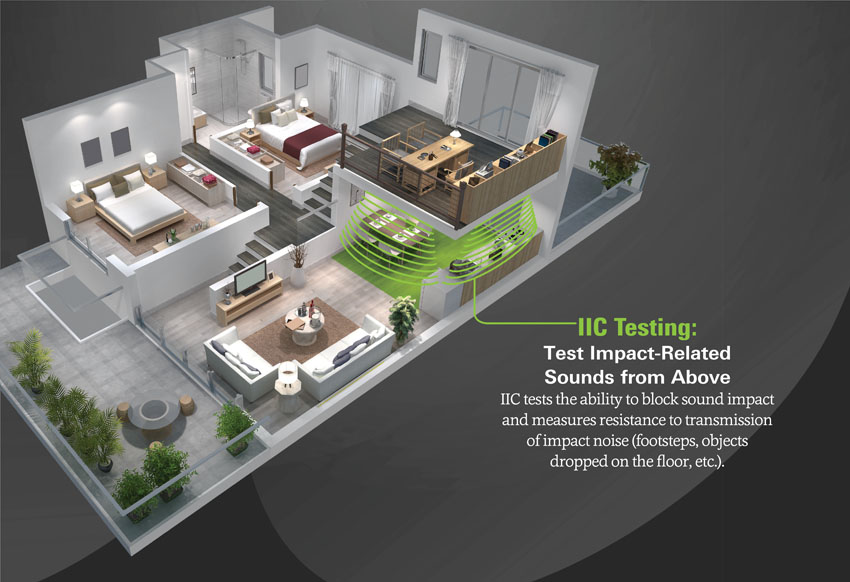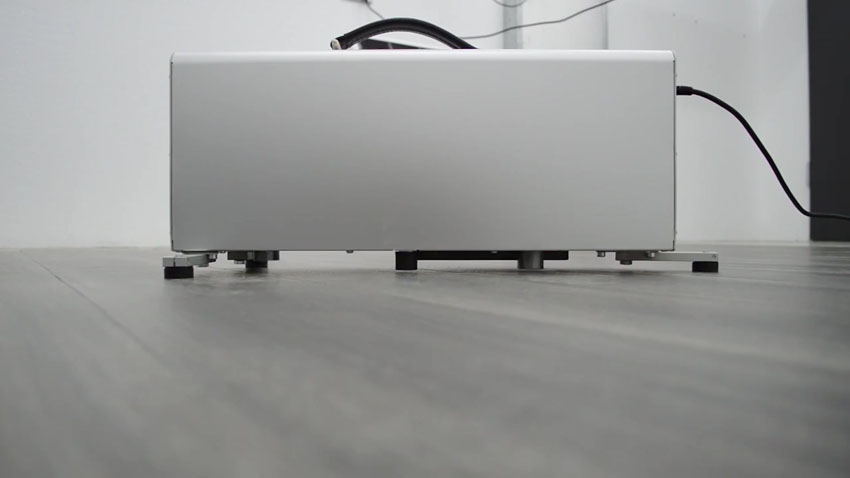The Quiet Multifamily Home
Learning Objectives:
- Discuss the growing demand of multifamily housing and the role of flooring to alleviate a chief complaint: unwanted noise from other units.
- Recognize how sound blocking and absorption is measured in flooring and its overall benefits in building performance.
- Evaluate sound ratings for product selection best suited to budget and installation type.
- Identify the advancement of flooring technologies and their importance in the future of modern multifamily space design.
Credits:
This course is approved as a Structured Course
This course can be self-reported to the AANB, as per their CE Guidelines
Approved for structured learning
Approved for Core Learning
This course can be self-reported to the NLAA
Course may qualify for Learning Hours with NWTAA
Course eligible for OAA Learning Hours
This course is approved as a core course
This course can be self-reported for Learning Units to the Architectural Institute of British Columbia
What happens when two opposing forces—the need for housing density and the need for quiet homes— converge? How does the architect, interior designer, or specifier create multifamily homes that are close in proximity and yet not noisy? Part of the answer lies in the choice of flooring, which can absorb and block unwanted sound from traveling between floors, thus contributing to the peaceful and quiet homes renters and owners want.

Photo courtesy of Mohawk Flooring
Residents in multifamily homes want the conveniences of density without the excess noise from adjacent units.
“The specification of flooring and underlayment pads play a tremendous role in making multifamily homes as quiet as single-family homes,” says David Moore, Senior Product Director for Mohawk Flooring. “For some of us, nothing is more irritating than hearing the neighbors upstairs walking around. Achieving superior acoustics between floors is very difficult to achieve after the fact. Ideally, the architect or designer understands how the flooring chosen for the project can create a quiet and relaxing environment for many years to come.”
The need for new apartments and condominiums is growing and will continue to grow. While a single-family home with a white picket fence may evoke the American Dream, the reality is that multifamily housing makes more sense on many levels: economic, demographic, and ecologic. Of the more than 43 million rental households in the United States, only 15 million live in single-family homes, while 26 million live in multifamily units.1 Even more live in owner-occupied apartments and luxury high-rises.
While enjoying the benefits of dense housing— such as shared amenities, city access, and affordability—the drawback can be noise that travels between units. Without attention to noise control, the sounds of common daily acts such as walking, talking, showering, and vacuuming will radiate from one unit to the other, diminishing the sensation of autonomous living. And when the neighbors are noisier than average, the irritation is greater.
Complaints about sound traveling through floors are rampant. And studies show that these unwanted sounds have negative effects on human bodies and moods.
SCIENTIFIC STUDIES ON THE EFFECTS OF NOISE ON THE BODY
In a 2017 paper titled “Effects of floor impact noise on psychophysiological responses,” it was noted that most research on environmental noise has analyzed long-term health consequences of transportation noise such as road traffic or airport noise, which is associated with elevated blood pressure, higher use of cardiovascular drugs, heart trouble, and hypertension.2
However, there have been fewer studies of health problems from noise in dwellings. This is despite the fact that people spend most of their time in or around their homes. One study identified associations between dissatisfaction with the noise from neighbors and mental health risks. Another study found that people who perceived neighbor noise as a severe annoyance experienced higher health risks, including cardiovascular disease. Some research found that various neighbor noises had adverse effects on sleep quality. In particular, they reported that “footstep noise was found to be one of the most disturbing impact noises from neighbors.” According to another study, “Annoyance induced by floor-impact noise has a reciprocal relationship with mental or physical health complaints.” The conclusion is that hearing the neighbors walking around upstairs can be more than a nuisance to some residents.
And it is not just at home but also at work, school, and in health-care settings that unwanted noise may have an adverse impact on occupants’ physical and mental well-being, which can in turn negatively affect an organization’s bottom line.
In educational learning environments, unacceptable noise levels can be directly correlated to student achievement and teacher stress. Acoustics figure prominently in health-care environments where patients require a quiet environment to heal, privacy is critical for patients and families, and health-care workers need to have clarity in their conversations about patients’ needs and instructions. In the hospital setting, noise leads to unsatisfied patients. According to the American College of Health Care Administrators (ACHCA), noise disruption routinely receives one of the lowest scores. Unsatisfied patients directly affect revenue for a hospital.
Study after study shows that flooring choices may have a substantial impact on noise and comfort.

Photo courtesy of Mohawk Flooring
Acoustics are increasingly being addressed as a factor in healthy homes.
IMPORTANCE OF SOUND RECOGNIZED BY DESIGN AND BUILD INDUSTRIES
Sound is increasingly recognized as a major factor in well-being. From an evolutionary aspect, hearing is arguably the most important sense developed to detect the approach of danger. While eyelids developed to block light as needed, ears did not develop lids to block sounds, as that would be dangerous, according to some theories. So rather than relying on functions of the body to block unwanted sounds, we must use engineering and design to block and absorb unwanted noise and create quiet. According to author Pico Iyer in his book The Joy of Quiet, times of quiet are “essential to our quality of life and to be able to think straight.” Sound expert Gordon Hempton, who calls himself an acoustic ecologist and sound tracker, says that “silence is an endangered species.”
In the design and build industries, concerns for quiet in the home are rising, with architects expanding their goals for indoor environmental quality (IEQ) to include acoustic performance. According to the Centers for Disease Control, IEQ is the quality of a building’s environment in relation to the health and well-being of those who occupy the space. In the quest to create a quiet multifamily home and less unwanted noise from apartments above, flooring can play an important role. It is helpful to understand how sound blocking and absorption are measured in floors, and this will be explained next.
HOW SOUND BLOCKING AND ABSORPTION ARE MEASURED IN FLOORING
As building codes have evolved, sound-control standards have been developed to determine the amount of noise allowed to penetrate through common walls and floors within dwellings. These standards are especially helpful for designers, builders, and owners when comparing various products to achieve sound-control goals.
Two standards are used to determine the amount of sound that transmits through flooring to the space below: impact insulation class (IIC) and sound transmission class (STC).
IIC Tests Impact Sounds from Above
IIC tests the ability of an assembly to block sound impacts and measure resistance to transmission of impact noise, such as footsteps, objects dropped on the floor, etc.

Image courtesy of Mohawk Flooring
Impact insulation class (IIC) testing measures the ability of an assembly to block sound impact and measures resistance to transmission of impact noise (footsteps, objects dropped on the floor, etc.).
The test is conducted using a “tapping machine” upstairs in the sending room, and a sound-measuring device downstairs in the receiving room.

Image courtesy of Mohawk Flooring
A tapping machine is at work in the sending room.

Image courtesy of Mohawk Flooring
A sound lab can recreate and detect a variety of noise agents in a multifamily dwelling.
The assemblies are tested according to ASTM E492 - 09(2016)e1: Standard Test Method for Laboratory Measurement of Impact Sound Transmission Through Floor-Ceiling Assemblies Using the Tapping Machine.
According to ASTM, “This test method is based on the use of a standardized tapping machine of the type specified in 8.1 placed in specific positions on the floor. This machine produces a continuous series of uniform impacts at a uniform rate on a test floor and generates in the receiving room broadband sound-pressure levels that are sufficiently high to make measurements possible beneath most floor types even in the presence of background noise. The tapping machine itself, however, is not designed to simulate any one type of impact, such as produced by male or female footsteps.”















